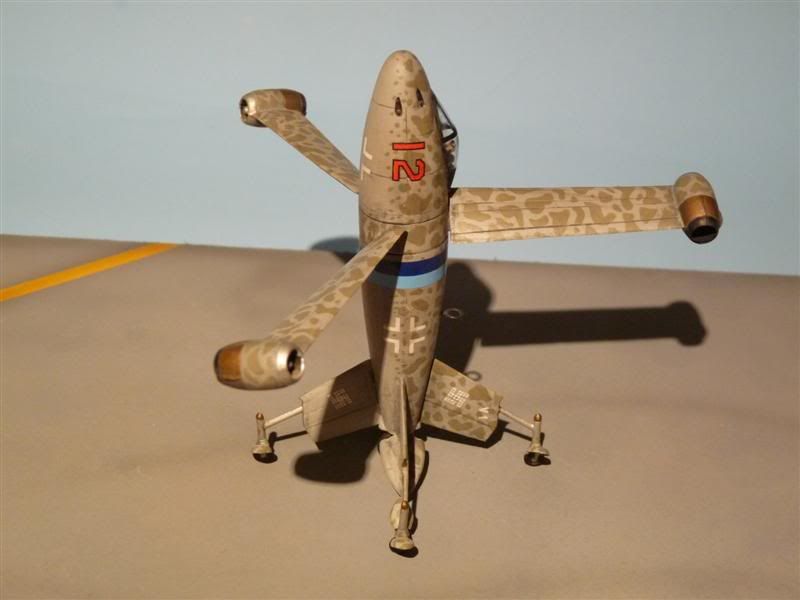@CWO:
I did in fact take note of your previous question about the “honourable peace” concept, but I was reluctant to offer any opinions on the subject because I wasn’t sure from what angle the question was being posed. Your new post today still leaves me unsure about what’s behind the question, but I get the impression – perhaps incorrectly – that it’s related to a subject that’s been raised in this forum many times: the theory (with which I disagree) that France, Britain and the U.S. should have realized that Soviet Russia was more dangerous to the world than Nazi Germany, and therefore that the western democracies should have been sensible enough to make a deal with Hitler rather than going to war against him – a deal that, at minimum, would have given him a free hand in dominating central and eastern Europe, and which ideally would have involved their joining him in a crusade against the USSR. As I’ve said, this subject has been debated ad nauseum in numerous threads, so I’m not going to restate any of my previous arguments on the subject.
On the general concept of Germany offering France an “honorable peace,” however, I will venture a couple of comments. As I’ve said in one or two other threads, one of Hitler’s most powerful motivations for conquering France was to avenge Germany for its defeat in WWI – a defeat he had taken very personally in 1918, and which he resented deeply for the rest of his life. He didn’t just want to defeat France, he wanted to humiliate it too…which explains such theatrical touches as the surrender at Compiegne in Marshall Foch’s old railway car, or the German victory parade through Paris which followed the exact route of the French victory parade after WWI. Given all this, and given that the French government under Petain had no desire to keep fighting, why would Hitler have made any concessions to France when he was able to get everything he wanted without having to bargain? Going easy on France would actually have contradicted one of his strongest motivations for subjugating the country in the first place – the revenge motive – and going easy on France wasn’t required to achieve the purely military objectives of the campaign because Petain’s government caved in and signed away the mortgage without any great fuss.
The theory (with which I disagree) that France, Britain and the U.S. should have realized
that Soviet Russia was more dangerous to the world than Nazi Germany
The more I learn, the more convinced I become that that theory is true. However, it is not relevant to this thread; and I will not debate it here.
As I’ve said in one or two other threads, one of Hitler’s most powerful motivations for conquering France was to avenge Germany for its defeat in WWI
Hitler’s most obvious motive for conquering France was that France had declared war on Germany. A second motive was that in 1935, France and the U.S.S.R. had signed a defensive alliance. Most people are not taught to see things from the German perspective. But when such an effort is made, it becomes clear that France represented a very serious security threat to Germany. Especially given the pro-war sentiments of its prime minister, Daladier.
After Poland fell, Hitler sought peace with France. Daladier refused. After Hitler failed to end the war with diplomacy, an end through military means was the next logical option.
He didn’t just want to defeat France, he wanted to humiliate it too…
There are several points worth bearing in mind:
Germans often went hungry during the interwar, pre-Nazi years, due in large part to the massive reparations required under the Versailles Treaty.
During the interwar years, the French government did little to prevent its soldiers from raping German women in French-occupied Rhineland.
French insistence on a weak, disarmed Germany (the Weimar Republic) meant that Germany would be helpless against any sort of Soviet invasion. Neither France nor any other major Western democracy sent soldiers to Poland when the Soviet Union invaded in 1919-'20.
For the past several centuries, France had pursued a consistently anti-German foreign policy. And had typically tried to keep Germany weak and divided.
Given these provocations, the French were extremely fortunate that during the early occupation years Hitler limited himself to victory parades and demolitions of monuments the French built to celebrate their victory in WWI. The early German occupation was considerably milder than the French had anticipated.
Going easy on France would actually have contradicted one of his strongest motivations for subjugating the country in the first place – the revenge motive
At least during the early stages of the German occupation, any German soldier accused of raping a French woman would be given a military trial. Conviction would result in the immediate execution of the soldier. Instead of repaying the French for the Rhineland rapes, Hitler’s initial occupation policy rejected “an eye for an eye.”
Things got uglier after Hitler invaded the Soviet Union. At that point, a number of pro-Soviet French resistance units appeared. Those units operated well outside the normally established rules of war. In Hitler’s view, that justified a German decision to operate outside those laws as well.







